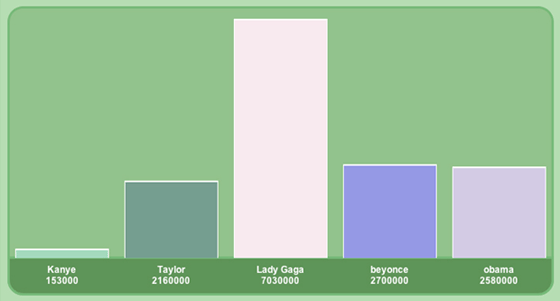
Interesting Report from Marketing Charts.com...
Among the general population, the greatest number of consumers said their top priority expenses one year ago were vacations (25%) and dining out (24%). Today, only 7% named vacations as a high priority and dining was named as a high priority for only eight%. However health and home expenses, like buying organic food and home maintenance were on the rise even as consumers traded down or out on other items.
So far, consumers are showing restraint when it comes to early holiday shopping. When asked what discount level would motivate them to begin their holiday shopping at retail stores in the next 30 days, 69% said they would not be motivated by a department store discount. Of that group 44% feel it is too early to start holiday shopping, including 52% of affluent and 48% of young professionals.
Pamela Codispoti, American Express Senior Vice President and General Manager, Cardmember Services, says "... there has been a shift in how consumers are expressing their wants and needs... (they) have taken stock of their financial situation and have a better handle on what their spending and saving plans are in the current economy... amid their cautiousness we are seeing some areas where people are willing to increase spending."
Comparing their priorities versus one year ago, two significant shifts areapparent:
- Car maintenance showed the single most significant jump in priority (up 37 percentage points). 42% named it as a high priority today, but only 5% said that automobile maintenance and care was a high priority one year ago
- The second highest shift was related to grooming, which rose 28 percentage points in priority. 46% said salon hairstyling and grooming was a high priority today; only 18% of adults said that it was a high priority one year ago
| Higher Priority Rating Today vs. One Year Ago (% of Respondents) | ||
|
| % of Respondents | |
| Expense | More Important Today | Important One Year Ago |
| Salon hair styling | 46% | 18 |
| Auto maintenance | 43 | 5 |
| Private schools | 16 | 6 |
| Home improvements | 14 | 7 |
| Organic food | 13 | 7 |
| Massage | 13 | 6 |
| Source: American Express Spending & Saving Tracker, September 2009 | ||
| Less Important Today vs. One Year Ago (% of Respondents) | ||
|
| % of Respondents | |
| Expense | High Importance Today | Important One Year Ago |
| Pet care | 11% | 18% |
| Dining out | 8 | 24 |
| Clothes | 8 | 18 |
| Fashion | 7 | 15 |
| House cleaning service | 6 | 12 |
| Vacation | 7 | 25 |
| Sports activities | 5 | 12 |
| Source: American Express Spending & Saving Tracker, September 2009 | ||
Additional key findings included:
- Young professionals were more optimistic about the economy and more likely to increase spending during the next 30 days (24% versus 14% of the affluent and 10% of the general population)
- When young professionals who plan to spend more were asked what they would be spending it on, two thirds said clothing (65%), and more than half said dining out (54%) and travel (53%)
- Among the general population, about one-half of consumers who expect to spend more said they plan to increase their spending on groceries and clothes (49% each)
- The affluent who expect to spend more said it would be on travel (56%), dining out (47%) and clothes (43%)
- When American consumers were asked what they would do with $500 of found money, one-third of consumers said they would pay off their regular monthly bills. One-in-four said they would apply it to pay off credit card debt or save it (26% each).
- 33% of young professionals would put found money toward their credit card debt, compared to 26% of the affluent
- More young professionals than affluents would use the money to go on a shopping spree (16% versus 6%)
| Would Spend "Found" $500 (% of Respondents) | |
| Spend On | % Would Spend |
| Regular monthly bills | 32% |
| Save | 26 |
| Pay credit card debt | 26 |
| Mortgage/rent payment | 11 |
| Splurge at restaurant | 10 |
| Buy for others | 10 |
| Shopping spree for self | 7 |
| Source: American Express Spending & Saving Tracker, September 2009 | |
Assessing consumers' spending plans on large purchases (over $500), young professionals showed the most willingness to spend:
- Only 15% of the respondents in the general population plan to make a large purchase in the next 30 days.
- The spenders were predominantly young professionals (38% versus 24% affluent)
- Young professionals also planned to spend more on those purchases ($2,460) than their affluent counterparts ($2,170)
74% of the general population cited "seeing family and friends affected by the recession" was stated as being the most significant impact of the economic downturn. In fact, says the report, more people cited this reason than "losing their job" (30%), "losses in the stock market" (54%), and "losses in retirement or 401K savings" (56%).
To review the complete AMEX release, please go here.
Sphere: Related Content



 by Karl Greenberg
by Karl Greenberg  by Karl Greenberg
by Karl Greenberg  by Sarah Mahoney
by Sarah Mahoney 


 by Karl Greenberg
by Karl Greenberg  by Aaron Baar
by Aaron Baar  by Tanya Irwin
by Tanya Irwin  As we approach the holiday season, wary merchants may be limiting their inventories so as not to be left with huge amounts of unsold product in the new year.
As we approach the holiday season, wary merchants may be limiting their inventories so as not to be left with huge amounts of unsold product in the new year.  Progresso chefs play telephone with their customers, using string and empty Progresso soup cans. A chef offers marital advice to a woman whose husband wears clothes from 20 years ago. The husband sees no problem with his attire and tells the cook that his wife should relax and enjoy the view.
Progresso chefs play telephone with their customers, using string and empty Progresso soup cans. A chef offers marital advice to a woman whose husband wears clothes from 20 years ago. The husband sees no problem with his attire and tells the cook that his wife should relax and enjoy the view.  In this down economy, upscale restaurants suffer greatly now that expense accounts are closely watched. How can one enjoy a nice, juicy steak without looking irresponsible? Enter
In this down economy, upscale restaurants suffer greatly now that expense accounts are closely watched. How can one enjoy a nice, juicy steak without looking irresponsible? Enter  Caribou Coffee launched a handful of videos promoting its fall menu flavors starring Jack & Gourdo, a pumpkin and gourd. Jack eats entirely too much pumpkin bread in the first ad, considering he's a pumpkin. Gourdo mistook him for an orange.
Caribou Coffee launched a handful of videos promoting its fall menu flavors starring Jack & Gourdo, a pumpkin and gourd. Jack eats entirely too much pumpkin bread in the first ad, considering he's a pumpkin. Gourdo mistook him for an orange.  The California Milk Processor Board is launching its latest "Got Milk" campaign starring rock star White Gold. TV spots promote the "Battle for Milkquarious," a 20-minute rock opera about milk. Yes, you read that correctly: a rock opera about milk. It launches Oct. 5
The California Milk Processor Board is launching its latest "Got Milk" campaign starring rock star White Gold. TV spots promote the "Battle for Milkquarious," a 20-minute rock opera about milk. Yes, you read that correctly: a rock opera about milk. It launches Oct. 5  Santa Claus, the Easter bunny, a leprechaun, the tooth fairy, Big Foot, and a Diet Dr Pepper spokesman. What seems out of place? These fictional characters attend a meeting called the "I exist" support group, in a TV ad promoting Diet Dr Pepper. The diet soda tastes so great that it's hard to believe it's real. Even Santa Claus has a hard time believing.
Santa Claus, the Easter bunny, a leprechaun, the tooth fairy, Big Foot, and a Diet Dr Pepper spokesman. What seems out of place? These fictional characters attend a meeting called the "I exist" support group, in a TV ad promoting Diet Dr Pepper. The diet soda tastes so great that it's hard to believe it's real. Even Santa Claus has a hard time believing.  Kiehl's launched a comic-themed
Kiehl's launched a comic-themed  The Las Vegas Convention and Visitors Authority launched two TV spots this summer using two different brand themes. The first falls under the uber-popular "What happens here, stays here" umbrella and features a woman reporting a drop in Las Vegas tourism. Once she's off-air, viewers find that she's not wearing any pants, but a bikini bottom. Her suit top is quickly removed and she jumps into a pool surrounded by a crowd of partygoers.
The Las Vegas Convention and Visitors Authority launched two TV spots this summer using two different brand themes. The first falls under the uber-popular "What happens here, stays here" umbrella and features a woman reporting a drop in Las Vegas tourism. Once she's off-air, viewers find that she's not wearing any pants, but a bikini bottom. Her suit top is quickly removed and she jumps into a pool surrounded by a crowd of partygoers.  ATTIK created a print campaign for Scion tC sports coupe. The agency created a set of unique manifestos for the tC. "Tear it up, don't rip it off. Always zag when others zig. Become one of us by becoming none of us," reads one ad,
ATTIK created a print campaign for Scion tC sports coupe. The agency created a set of unique manifestos for the tC. "Tear it up, don't rip it off. Always zag when others zig. Become one of us by becoming none of us," reads one ad,  Random iPhone app of the week: MasterCard launched its second iPhone app, called MasterCard Priceless Picks. The app provides users with more than 200,000 GPS-pinpointed deals and discounts for stores, restaurants and entertainment venues. People can also share their own Priceless Picks from their favorite restaurant, favorite concert venue or their favorite park. User Picks appear in round bubbles that are color-coded to represent a specific category, such as dining, shopping or travel, while MasterCard-selected offers appear as squares.
Random iPhone app of the week: MasterCard launched its second iPhone app, called MasterCard Priceless Picks. The app provides users with more than 200,000 GPS-pinpointed deals and discounts for stores, restaurants and entertainment venues. People can also share their own Priceless Picks from their favorite restaurant, favorite concert venue or their favorite park. User Picks appear in round bubbles that are color-coded to represent a specific category, such as dining, shopping or travel, while MasterCard-selected offers appear as squares. 
 by Karl Greenberg
by Karl Greenberg  by Karl Greenberg
by Karl Greenberg  by Tanya Irwin
by Tanya Irwin  "Eighty-seven-year-old Gladys has a reputation among her fellow retirement community members," write Marilyn Shuttle and Lori Jo Vest in the first chapter of
"Eighty-seven-year-old Gladys has a reputation among her fellow retirement community members," write Marilyn Shuttle and Lori Jo Vest in the first chapter of 












